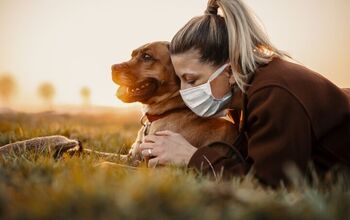Pets Can Get Sunburned Too - Here’s What You Need to Know

Most pet owners know the dangers of overheating and hot pavement during summer, but there’s another seasonal risk that often flies under the radar: sunburn. While it’s common to think of sunburn as a human problem, animals, especially dogs and cats, can suffer the same painful effects of too much sun exposure.
And it’s more than just an occasional red nose. Prolonged sun exposure can lead to peeling, inflammation, long-term skin damage, and in some cases, even skin cancer in pets.
“Pets with light-colored fur or thin coats are particularly at risk,” warns Peony Melbourne, a veterinary surgeon with the RCVS in the UK. “Areas like the nose, ears, and belly are especially vulnerable, these spots aren’t protected by fur and can burn easily.”
Sunburn tends to affect areas where an animal’s fur is thin or absent, such as the tips of the ears, the nose, the belly, and around the eyes. Animals with light-colored fur or pink skin are at the highest risk, as are certain breeds with very short or sparse coats. Hairless breeds, such as the Chinese Crested dog or Sphynx cat, are particularly vulnerable, although even well-coated pets can be at risk in certain areas.
The most common signs of sunburn in pets include reddened or warm skin, excessive licking or scratching at the affected area, sensitivity to touch, or visible peeling. In more severe cases, skin may blister or scab, which can require medical treatment.
According to veterinary professionals, the best way to protect pets is to limit their exposure to direct sunlight during peak UV hours, typically between 10 a.m. and 4 p.m. If pets are outside during these hours, access to shade is crucial.
In addition to minimizing sun exposure, pet-safe sunscreen is another line of defense. These products are formulated without ingredients toxic to animals, such as zinc oxide or certain essential oils, both of which are commonly found in human sunscreens. Sunscreen made specifically for pets can be applied to high-risk areas like the nose, ears, and belly. Some formulations come in wipes or sticks, making application less of a battle.
For pets who spend extended time outdoors, whether hiking, at the beach, or just lounging in the yard, lightweight UV-protective clothing is becoming more common. These garments are especially helpful for dogs with exposed skin or recent hair loss due to surgery or allergies.
Although most sunburns are mild and heal with time, they should not be ignored. Owners who notice any unusual redness, discomfort, or behavior changes in their pets after sun exposure should contact a veterinarian. Self-treatment with home remedies is not recommended, as many over-the-counter products can be harmful if licked or absorbed.
Heat stress is also a concern during summer months, and it often goes hand in hand with sunburn. Ensuring pets have access to fresh water, cool resting spots, and ventilation can prevent more serious complications like heatstroke.
While the idea of sunburn in pets may seem surprising, the truth is that animals are not immune to the same environmental risks humans face. As more research focuses on pet skin health, veterinarians hope awareness will grow.
In short, if you’re applying sunscreen before heading outside, it might be time to think about your pet, too. A few simple precautions can make all the difference—and help keep those noses pink, but not burned.
Join the PetGuide community. Get the latest pet news and product recommendations by subscribing to our newsletter here.

Nevena is a freelance writer and a proud mom of Teo, a 17-year-old poodle, and Bob, a rescued grey tabby cat. Since childhood, she had a habit of picking up strays and bringing them home (luckily, her parents didn't know how to say NO). When she's not writing for her fellow pet parents, Nevena can be found watching Teo sleep. To her defense, that's not as creepy as it sounds!
More by Nevena Nacic























